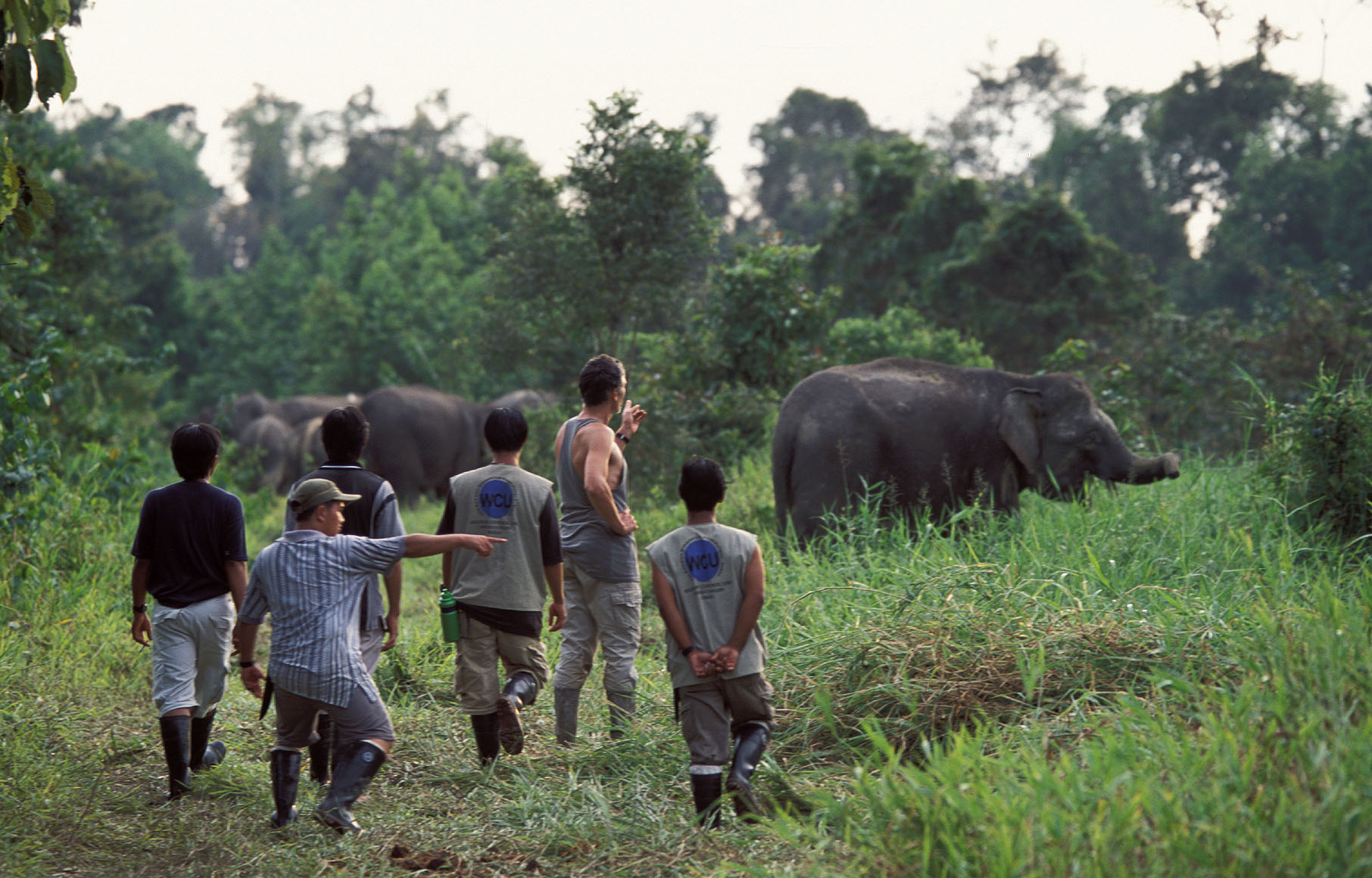We study elephant ecology and movements in the Kinabatangan to design adequate strategies leading to peaceful co-existence between people and elephants.
The Bornean elephant is endemic to the island of Borneo and is mostly found in Sabah. Between 200 and 300 animals are living in the Kinabatangan floodplain. Their movements are confined to an area located between the mangroves along the sea and the “Sandakan-Lahad Datu” highway, located upriver from Sukau. Partnering with Seratu Aatai, three researchers from the HUTAN WSP unit, combining more than 50 years of field experience with elephants, are working to better understand elephant ecology and conservation needs in Kinabatangan: population dynamics of the herds; underlying reasons for their movement patterns across the floodplain; ecological impact of elephant presence on the Kinabatangan ecosystems; what mitigation measures will be the most efficient; and what is the real vs perceived opinion of villagers and palm oil people regarding elephant damages and elephant co-habitation.
With the support of the satellite radio-collars set up by the Danau Girang Field Center and the Wildlife Rescue Unit, the team is following the movements of these tagged groups. Elephants are now spending an increasing amount of time within oil palm plantations. Indeed, these agricultural lands offer good food opportunities to the pachyderms. However, elephant presence in a plantation can create damages as well as the ensuing resentment from the plantation owners. The WSP team is currently engaging with several oil palm estates and villages to find long-term solutions for people and elephant co-existence. One approach is to create elephant corridors within several estates to provide safe passage to the animals within the agricultural landscape.
We identify solutions and create a situation where animals and people can co-exist and live in harmony.
In 2001, HUTAN created the “Elephant Conservation Unit” or ECU, following repeated complaints from villagers about conflicts with elephants. Elephants would enter people’s plantations and damage their crops or their properties. They would also repeatedly visit local cemeteries and destroy the stones and graves, creating real emotional distress within the community. At this time, villagers considered elephants as a pest that needed to be removed. In order to harness the support of community members for wildlife conservation, it was crucial to find workable solutions to these conflicts. We thus hired a team of seven villagers to work on these issues.
In the short-term, the team engaged with crop owners to chase elephants from their properties; we would use noise canon, spotlights and other peaceful repellent techniques to push the animals outside the area of people’s crops. We also started to erect electrical fences to protect plantations and graveyards from elephant incursion. However, we knew that these short-term actions needed to be coupled with long-term and more sustainable solutions to improve the policy framework for elephant population management across their range.
Thus, we engaged in research activities to better understand the underlying reasons for conflicts, and to identify how the pachyderms could survive in man-made landscapes. We also engaged in capacity building and awareness activities to show people how it is possible to share their environment with these rather large neighbors! Today, the team is increasingly engaging with the local communities outside of Kinabatangan, where elephant damages have increased over the past few years. In many cases, the conflicts result from recent land-use changes creating a new situation. Communities are not used to see elephants in their vicinity and they perceive them as intruders invading their lands.
We need to find ways to increase the level of community understanding of elephants to achieve an acceptable level of peaceful co-existence between people and pachyderms in these villages. Based on the model developed in Kinabatangan over the years, HUTAN, Seratu Aatai, and other partners have embarked on a long-term project to replicate this approach where it is needed. In five villages, we trained “Elephant Guardian Units” in elephant monitoring and mitigation techniques. These units are now empowered with the necessary knowledge to raise awareness with their own communities about the current situation.










